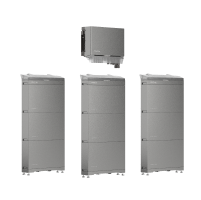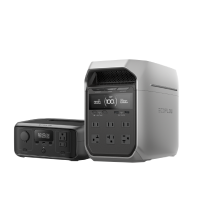What an electricity grid is, and how it works
Life without electricity is not easy and is extremely troublesome. We only really notice our dependence on electricity when it fails. Whether it is a power outage due to a storm, a short circuit in the home or in traffic, when a traffic light system at a sensitive location does not work due to a power outage.
Trade, transport, communication and much more are dependent on a well-functioning power grid and a secure power supply. The existing power grid in the UK helps to ensure that the power supply is secure.

How does electricity work?
Energy from the air, sun or water can be converted into electrons using technical aids. This also applies to energy generated in large power plants. These electrons together represent the current and move from place to place in power cables.
The moving electrons create a current that begins to flow in an electrical circuit. The amperage, on the other hand, is the speed of the electrons. This means that the faster the electrons move, the higher the amperage. When the current flows through a power cable, it can be compared to a current.
The current is measured in an internationally defined unit called Ampere. Ampere is the unit for the number of electrons that flow through an electric circuit in a defined period of time.
Calculating the current can be compared to calculating the flow rate of water. With water, for example, you measure how many litres flow past a certain point in a given period of time. This calculation variant can also be used for electricity. However, in this case, a certain point in the circuit is measured for one second.
If you take 1 ampere, for example, this means that 6.24 × 1,018 electrons flow past the predetermined point in this second. The result of the calculation example is called a coulomb. The current is also distinguished by voltage and type into direct current (DC) and alternating current (AC).
‼️The physicist and mathematician André-Marie Ampere was the discoverer of the unit of measurement for current. He found that when a magnetic field is generated around a conductor, the current flows evenly through the conductor.
How does electricity flow?
Electrons generated from renewable energy sources or a large power plant flow through a conductor material, usually a copper or metal wire.
However, two conditions must be met to enable the flow:
- The circuit must be a closed loop, such as a battery, in which voltage is generated, causing the electrons to flow. This allows energy to be supplied to a device connected to the circuit. With an on/off switch, the circuit can be opened and closed or interrupted.
- The circuit has a power source, a battery, for example, that generates a voltage. Without voltage, electrons move randomly and very evenly in a conductor wire, and the current does not flow. The generated voltage creates pressure that moves electrons in a specific direction.
If you are interested in an Alternator Charger, please register here, and we will be happy to provide you with a non-binding offer.
Make your free consultation appointment now!
What kind of product or solution are you interested in?


Monitoring and controlling the electricity
The grid control centres not only monitor stability, but can also take on a controlling function. For example, if wind turbines generate a lot of renewable electricity in the North Sea area on a stormy day, a bottleneck can occur in the electricity grid. Experts can intervene here to keep the UK's grid voltage constant to counteract a bottleneck.
If there is a risk of congestion, there are various ways to prevent it. One of these options is Redispatch. In the event of a Redispatch, the specialist staff instructs the power plant operators to reduce the regular electricity feed-in.
If such a measure is taken, for example, because a power plant is not generating enough electricity, other power plants have to increase their electricity feed-in to compensate.
Another possible measure that specialists can implement to prevent grid congestion is Feed-in management. Feed-in management can be used to prevent technical grid congestion. This management allows changing the schedule of renewable energy plants that generate electricity.
80% of electricity will soon come from renewable sources
The plan is that by 2050, renewable energy plants will be able to meet at least 80% of electricity demand. To achieve this, solar and wind power plants are being built where there is most sun and wind. More than 90% of these plants currently feed the electricity they generate into the medium and low-voltage distribution networks. Due to the energy transition, the electricity grid must be upgraded to absorb the electricity generated by renewable energy plants.




